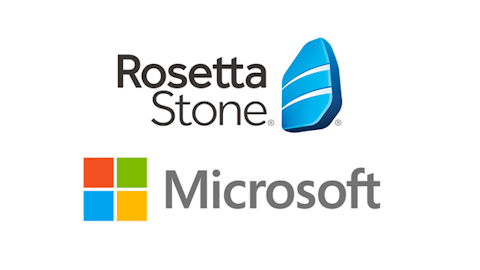Is Rosetta Stone Inc (NYSE:RST) a value trap? Language learning software company Rosetta Stone has been attracting several value investors over the last year or so. David Nierenberg stopped filing 13Fs this year, however he didn’t file any major amendments after disclosing an activist position during the first quarter of 2015. This means he still has a large position in the stock. John Lewis of Osmium Partners and Jim Roumell also have large positions in the stock and they allocated a large portion of their 13F portfolios to Rosetta Stone Inc.
Today John Lewis disclosed in a regulatory filing that he reduced his stake by about 45000 shares compared to the end of 2015 and his position isn’t activist anymore. The details of this filing can be found below.
Jim Roumell, managing a smaller fund, has a lot riding on Rosetta Stone Inc. Twenty percent of his 13F portfolio is allocated to RST. Here is what he recently said about the stock:
“Rosetta Stone, RST. RST’s year-end cash balance of $48 million was slightly ahead of company guidance. The company’s Lexia Literacy division continued to show rapid growth – 30% plus – and the company reiterated its 4 to 5 year revenue projection of $100 million for this important company asset. The company’s E & E (enterprise and education) language business continues to struggle with a slight YOY revenue decline. The company maintains that it is being negatively impacted by continued usage of a consumer-centric product in its E & E language space. RST is now beta-testing its new enterprise platform with several corporate customers. It is highly differentiated from its consumer product and includes the requisite reporting and measurement tools demanded by E & E customers. The company reported it has received very favorable feedback, with sign-ups 10x what was expected. The new platform is expected to be introduced into the marketplace in the 2H of 2016. E & E Language remains the key event to unlocking substantial value creation versus more modest, though still significant, value creation. Increasingly, it appears to us that the value of Lexia, plus the company’s cash, approaches the company’s current market capitalization leaving investors free options on the company’s consumer and E & E Language businesses.
The company also announced it has identified an additional $19 million in estimated annual cost-savings. RST has decided to maintain a direct E & E language sales force in North America and Northern Europe, but to switch to a licensing model outside of these areas. The result of this switch will reduce 2016 E & E language revenue from an estimated $77 million to $70 million.
The company’s consumer business is performing as expected: lower revenue from a more disciplined pricing strategy resulting in a greater gross margin contribution. Brain exercise division Fit Brains was marked down by $5.6 million from its $12 million purchase two years ago. This business is being run as a cash-neutral business with the view that it is not a core asset of the company.





